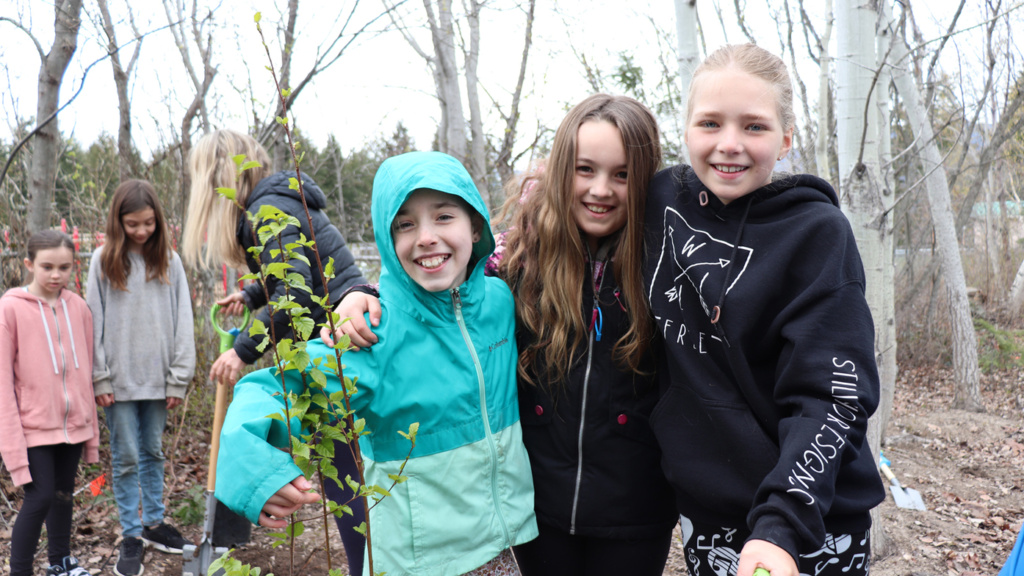514 Trees planted by students for Earth Day 2022

With funding from Natural Resources Canada Two Billion Trees initiative, the BC Small Wetlands Association (BCSWA) provided trees for projects at eleven School District 83 schools and three Columbia Shuswap Regional District Parks. BCSWA also assisted in the organizing of Secwepemc cultural ceremonies surrounding the planting of trees.
Most of the trees we provide are grown for BCSWA by Sagebrush Native Plant Nursery in Oliver BC. In 2023 we will be promoting the benefits of Miyawaki mini forests to schools as well as community organizations and local municipalities. The trees are all native species selected for their cultural importance to the Secwepemc people.
Planning a Tree Planting Event
After the school decides on a suitable location for a spring or fall tree planting event, contact BCSWA and we will add the number of trees to our order for spring or fall planting. We can provide equipment, materials and volunteers if required and collaborate with the school on content for the cultural ceremony, inviting Secwepemc elders, drummers and story tellers.
Planning checklist
- Number of trees
- Site preparation required – weed pull, weed barrier, rototilling
- Will you need equipment, soil and mulch for planting?
- Do you have a plan for watering and ongoing maintenance?
- Estimated number of students who will participate in a planting event
- Will you be inviting any other organizations to participate/volunteer?
- Elders and dignitaries to be contacted?
- Ceremony and lessons to be offered on Reconciliation in Action and Climate Change Mitigation
Planting Trees
by BCSWA Botanist Michaela Minaker
Here are three tree planting videos on how to properly plant a tree, as well as how to safely prune the root system if the tree is root-bound. When first removing your tree from its pot, inspect the root system, determine if the roots are loose enough to be detangled or loosened by “tickling” the roots with your hand. If the roots however are tightly bound, pulling the bottom roots with your hands will work, if you meet resistance and it’s too tight, use a knife, cut vertically down the side of the roots, all around the root ball about a half an inch deep, making sure to not harm the “international roots” or tap root. You only want to cut the dead/non viable roots on the outside of the root ball in-order to loosen the healthy roots. Please do not cut the roots with a knife violently if using a knife is the only option. I highly recommend trying to loosen the roots by hand, as this is less invasive and reduces the chance of sending the tree into shock. If you’re planting a fruit tree, I recommend using fertilizer, however if you’re planting a deciduous or coniferous tree (Birch, Aspen, Cottonwood, pine, cedar or juniper etc.) mulch/fertilizer isn’t entirely needed, however is always recommend. For coniferous trees, adding woodchips around the base of the tree is fine if not recommended, as it wards off certain bugs or mice/voles. If putting woodchips around a deciduous tree I recommend using any type of wood that isn’t cedar.
![]()
